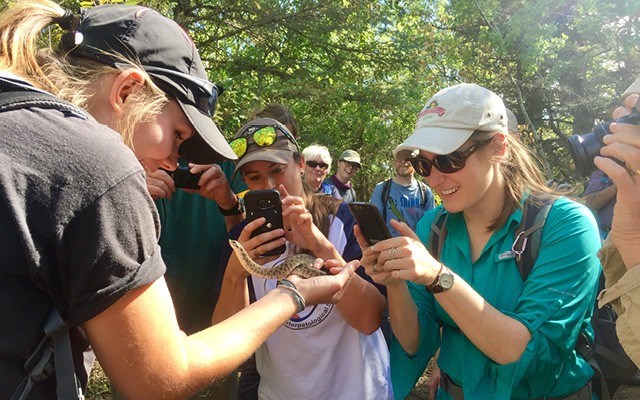Every September I make a pilgrimage of sorts. It isn't to a place of nostalgic yen or religious import. It isn't even to a place that has particular meaning to me. The reason for that is that this journey, by necessity, is to a different locale each year. But wherever this may be, no matter how far-flung the corner of this country, a dedicated group of people will meet there to talk about their work with animals in Canada. And I go because those animals happen to be reptiles and amphibians, the most endangered vertebrates on the planet; taxa that, for better or worse, I have been linked to for a lifetime.
As a board member of the Canadian Herpetological Society, which runs these meetings, I also have a duty. Far from bureaucratic obligation to a scientific enterprise, however, it's more a duty of care, connection, community and interest in this fraternity. Moreover, I like going to these gatherings, meeting old friends and colleagues, learning new things and talking shop. While I'll admit to that "shop talk" being of the decidedly geeky variety — and that it makes the jargon-esque banter at, say, a plumber's convention pale by comparison — it serves a practical purpose in my life as well: I find out about topics or studies that I will often investigate further and write about down the road.
These yearly synods attract a small but convivial group and see plenty of awkward socializing and dark humour. For many years there has been a running joke about the various research people in this discipline undertake. If you bump into someone you haven't seen in a while at a coffee break you might say "Hey, how's it going? What have you been up to?" And they may answer with "Oh, you know — saving the world," very much as a Whistlerite responding to that exact question might offer "Oh, you know — living the dream." In the same vein that the Whistlerite's answer is layered with the sarcasm of "Well, skiing's great but I'm working three jobs and can't find a place to live," the herpetologist's rejoinder usually telegraphs: "My work is going well but I spend all my time writing grant proposals for pittance funds and my study animal will be extinct in five years anyway." Like I said, dark.
So pervasive was this phraseology, that in my 2006 book Snakebit: Confessions of a Herpetologist, I titled a chapter about biodiversity survey expeditions to the lost forests of northern Vietnam "Saving the World a Jungle at a Time," and a later chapter, set in Armenia, "Saving the World Redux." In these cases, the tongue-in-cheekiness extended to the hapless nature of those endeavours and the chapters' slapstick protagonists. Sure, there was a whiff of noblesse oblige buried in there, but the expression was mostly a fun one, like a frat password, and no one took themselves seriously enough to believe it was true.
Flash forward just over a decade and that once-humorous expression seems all-too-prescient, those still using it in a light-hearted way gravely aware of its growing veracity. Over that period, presentations at meetings that might in the past have included looks at basic physiology, ecology, morphology, behaviour, reproductive biology, distribution or evolutionary relationships, have gradually been supplanted by studies with decided conservation overtones. Now, when any of the above subjects are addressed, they usually come with the caveat of an endangered or threatened species and couched in measurable mortality issues related to habitat destruction, roads, poaching, pollution, invasive species and climate change. This was certainly apparent at last week's meeting in Brandon, Manitoba, which coincidentally came on the heels of the release of the World Wildlife Fund's "Living Planet Report Canada: A national look at wildlife loss."
While the numbers detailed in that report aren't good, they have been widely covered in the news and I needn't detail them again here. Suffice to say, "saving" animals in this country is pretty much all we have left, and the Brandon meeting was dominated by studies of road mortality, population declines, and applied conservation measures like head-starting turtles by raising thousands of eggs in a facility where they're protected from anthropogenic harms (roads, subsidized predators, catastrophic weather events) and grown to a size where their survivorship in the wild is more likely. A few sample paper titles cover the bases: "Informational signage increases awareness and support for recovery for an endangered pit-viper in an urban park system:" "Re-introduction of the Northern Leopard Frog in British Columbia and Alberta;" "Population ecology of an endangered lizard species in Canada;" and "An update from the Saving Turtles at Risk Today (START) project in Muskoka, Ontario."
Despite the fact that "Saving the World" is now anything but a joke, I still learned a lot and enjoyed catching up with the people I know who are doing just that. Encouragingly, we even found several endangered species on a field trip to Spirit Sands Provincial Park.
But I did come away with one thought: being a geek has never been so fraught.
Leslie Anthony is a Whistler-based author, editor, biologist and bon vivant who has never met a mountain he didn't like.




